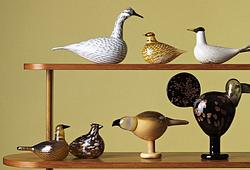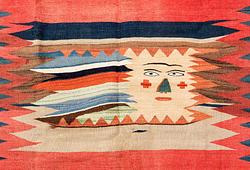A large Transitional dish, 17th Century.
Four Character mark to base. Rounded sides, decorated with the mythical beast Qilin in a mountain landscape. Diameter 35.5 cm.
Cracks, chips. Firingdefects.
Näyttelyt
Compare a dish in the Collection of the British Museum, Registration number Franks.769. Donated by: Sir Augustus Wollaston Franks.
Also compare, Bonhams, The Marsch Collection art for the literati, November 3, 2022, London, lot 19.
Kirjallisuus
For a Shunzhi blue and white porcelain dish of this design see : Shunzhi Porcelain, Treasures from an Unknown Reign (Butler, Curtis and little, University of Washington Press,2002) page 108, item 13. For another dish of this type decorated with this design see : Eastern Ceramics and other Works of Art from the Collection of Gerald Reitlinger, Catalogue of the Memorial Exhibition (Ashmolean Museum, Sotheby Parke Bernet, 1981. ISBN 0-90009-078-2).
Muut tiedot
A Qilin (Kylin) is a mythical hooved Chinese chimerical creature. Despite its fierce demeanour it is a good omen that brings Rui (roughly translated as serenity or prosperity), longevity, illustrious offspring and wise administration. The scaly body has a dragons head, hooves and can appear to have fire issuing from its body. The male Qilin is called a Qi and the female a Lin. The male often has horns. These creatures carefully tread to avoid all living insects or destroy grass under foot, it is reputed to be able to walk on water as well as land. Qilin only appear to mankind when an emperor of the highest benevolence sits on the throne or when a sage is about to be born. There is a strong argument that the Qilin is a stylised representation of the giraffe. This is because the Qilin is referred to only since the Ming Dynasty. The time of its first reference correspond roughly with the voyages of Zheng He, there were seven voyages between 1405 and 1433 (Zheng He lived c.1371–1435). It is known that on Zheng He`s voyage to East Africa (landing, among other places, in modern-day Kenya), the fleet brought back two giraffes to Beijing. It is also known that these two giraffes were referred to as Qilins. The Emperor proclaimed the giraffes magical creatures, whose capture signalled the greatness of his power.



































